
Mind & Body Connection
The Mind and Body Connection is the set of mechanisms through which one’s thoughts, emotions, experiences or spiritual practices can directly affect the way the body functions, being conducive to illness or to health, as seen in the effects of stress on the immune system or in such phenomena as the placebo effect, biofeedback, reiki, hypnosis, and meditation.
SWIM sponsors classes throughout our service area communities that include: Mindfulness Yoga, Virtual Reality Scenic Sessions (VRSS), and Dancing for Cardio Health. Please see Saving Our Seniors (S.O.S.) for more information on VRSS.
SWIM’s Mind and Body Connection program is built on mindfulness. What is the mind full of, when we are mindful? Our minds are really good at shuttling between past and future, driven by our fears and desires, memories and imagination. Our minds habitually go from reflecting on the past one moment, to worrying about the future at the next moment, with very little time spent on being fully present. This disconnection with our present reality has become even more severe with the advent of smartphones, the high levels of stress in our modern day lives, and endemic psychological trauma in our communities.
Mindfulness is the practice of filling our minds with the present, moment by moment
Mindfulness is the practice of filling our minds with the present, moment by moment. When we are mindful, we are more present; when we are more fully present, we listen rather than just hear, we perceive rather than just see. It affects everything we do, and impacts every interaction we have with others.
As the days pass, the cycle of the week shapes how we live our lives. Have you ever wondered, “Why is a week seven days long?” How about where the names of each weekday come from? The seven-day week originates from the calendar of the Babylonians, which in turn is based on a Sumerian calendar dated to 21st-century B.C. Seven days corresponds to the time it takes for a moon to transition between each phase: full, waning half, new and waxing half. Because the moon cycle is 29.53 days long, the Babylonians would insert one or two days into the final week of each month.
Mindfulness is the practice of filling our minds with the present, moment by moment
Mindfulness is the practice of filling our minds with the present, moment by moment. When we are mindful, we are more present; when we are more fully present, we listen rather than just hear, we perceive rather than just see. It affects everything we do, and impacts every interaction we have with others.
As the days pass, the cycle of the week shapes how we live our lives. Have you ever wondered, “Why is a week seven days long?” How about where the names of each weekday come from? The seven-day week originates from the calendar of the Babylonians, which in turn is based on a Sumerian calendar dated to 21st-century B.C. Seven days corresponds to the time it takes for a moon to transition between each phase: full, waning half, new and waxing half. Because the moon cycle is 29.53 days long, the Babylonians would insert one or two days into the final week of each month.

What day of the week was I born?
Day of Week Calculator for the Weekday of any Event
Interested in finding what day of the week you were born?

Weekly Meditation
For each day of the week, we have a meditation video in order to practice mindfulness. Choose your favorite by clicking on the scenic photos below. Photos are the work of Stacy Chai on the island of Kihei, Maui, Hawaii.
SUNDAY – The Daily Calm
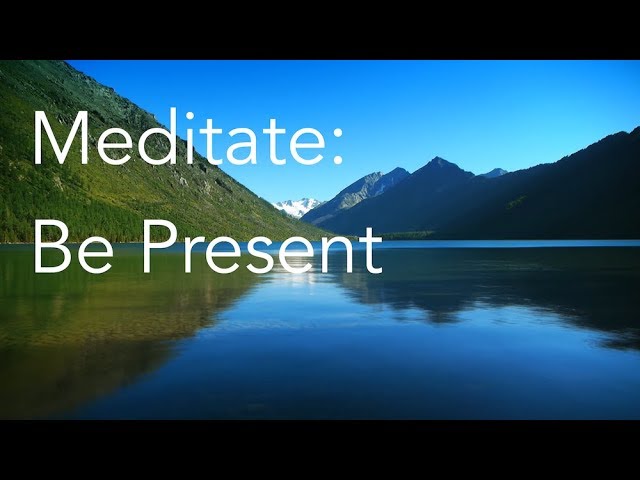
MONDAY – Overcoming Anxiety and Fear

TUESDAY – Giving & Receiving Loving Kindness (Happiness, Abundance & Healing)

WEDNESDAY – Be Present

THURSDAY – Letting Go
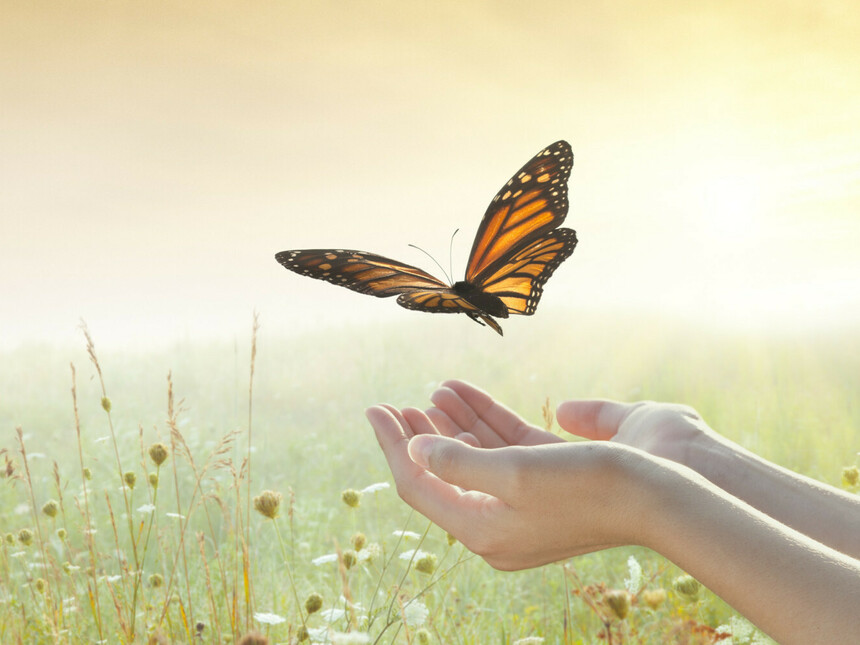
FRIDAY – Chakra Balance Guided Meditation for Positive Energy
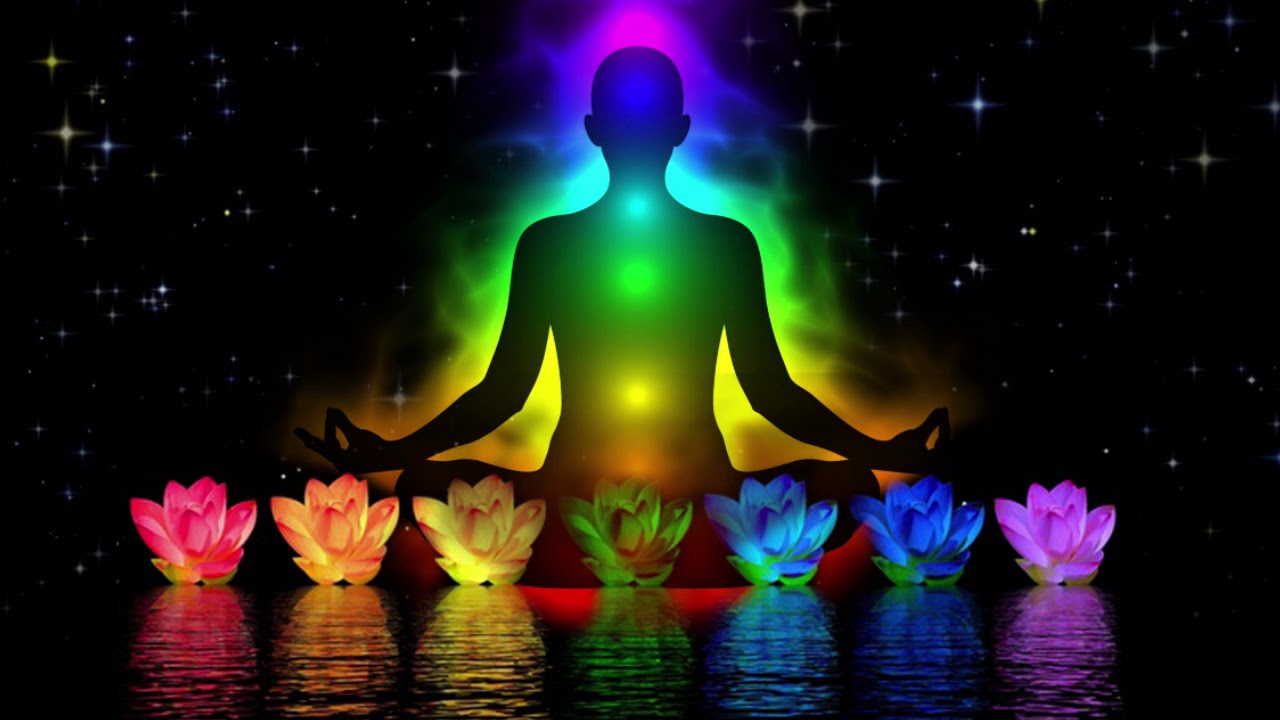
SATURDAY – The Attitude of Gratitude (Be Grateful for What You Have)
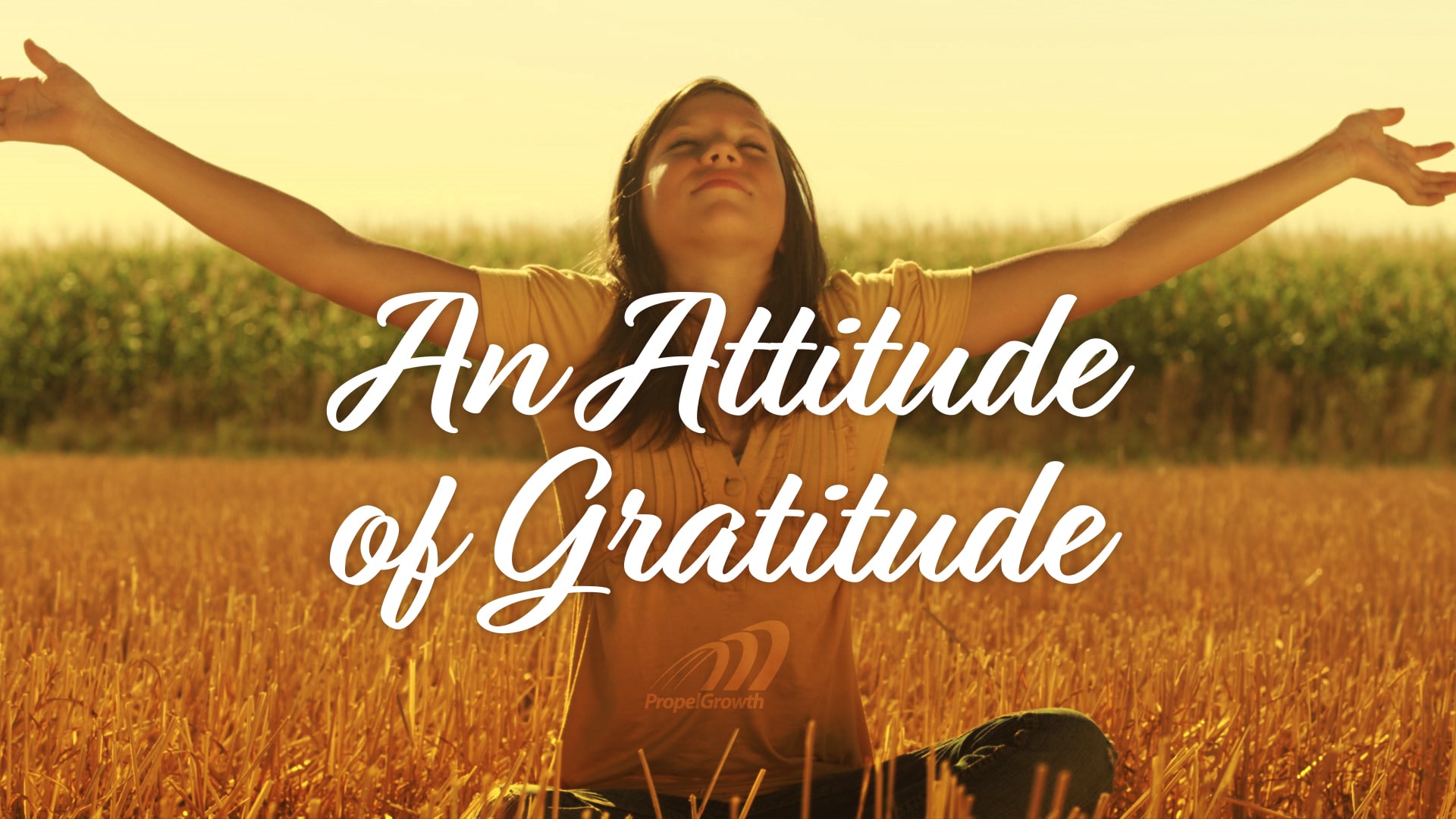
Anxiety and Stress Reduction Through Mindfulness Practice The Prevalence of Anxiety and Stress in Modern Times
The sources of stress in modern day life are seemingly infinite. From small everyday situations to major life events, it can feel as if there is no escaping the constant pressure of the world around us. Since the dawn of the digital age, a time when it was believed that computers would make our lives easier, life has, in fact, become busier. Perpetual distractions live just a click away, making it challenging for us to find stillness and a sense of inner peace. Even when we are doing seemingly nothing, we are still doing something – surfing the web, making appointments, and taking care of all sorts of business. There is plenty of action in our lives and very little meaningful restoration.
Along with this persistent experience of stress has come the prevalence of anxiety. While the two terms are often used interchangeably, there is in fact a subtle difference. Stress is what arises when an interrupting factor enters the picture, upsetting the normal balance of one’s life. It is the body’s response – physical, mental, and/or emotional – to any uprising that requires some type of change or action. It can be acute, being a response to a single circumstance, or chronic, being a response to prolonged pressure. These days, the chronic variety of stress is on the rise. The signs of stress vary from individual to individual, including but not limited to:
Physical signs– chest pain, headache, sweating, increased heart rate, fatigue, upset stomach, digestive issues, and sleep disturbance;
Emotional signs– anxiety, lack of motivation, irritability, depression, emotional withdrawal, and feelings of overwhelm;
Behavioral signs– changes in appetite, substance use or abuse, overuse of technology, increased emotional upset, and poor communication leading to relational struggles.
Anxiety, on the other hand is the experience of fear, nervousness, or apprehension. It is often the result of stress. It can be mild or severe, varying in the impact and control it has over one’s life. Often, it is not clear what has triggered the anxious feelings, but the experience is strongly felt nonetheless. Sometimes, this lack of understanding the cause perpetuates the feelings. There are numerous signs that point towards anxiety, including but not limited to:
Feelings of nervousness, fear, or worry
Feelings of panic or impending doom
Difficulty concentrating on the present moment
Fixation on or rumination over the past or future
Feelings of agitation or irritability
Difficulty regulating emotion
Difficulty falling asleep, or waking in the middle of the night with a racing mind
Withdrawal from support systems or the outside world at large
Physical symptoms of stress (i.e. digestive issues, sweating, and fatigue)
Both of these experiences, and the collection of symptoms they nurture, are widespread in our modern day cultures. While there may be numerous approaches to handling stress and anxiety, mindfulness practice is often the most undervalued and infrequently practiced remedy of them all. However, the use of mindfulness is growing as many of us are looking to get right to the root of our experience. As we become familiar with the ways that mindfulness can help us to manage our experiences of anxiety and stress, we find ourselves inspired to practice these invaluable skills.
How Mindfulness Helps to Manage Anxiety and Stress
When stress and anxiety arise within the body and mind, mindfulness techniques can help to reduce the perceived control that these responses hold over our thoughts and our actions. By drawing our awareness back to the present moment while maintaining compassion and curiosity towards our experience, we begin to disentangle the thoughts that bind us to our perception of whatever has arisen. Mindfulness techniques empower us to take a closer look at the present moment, disempowering our experience of fear at the same time.
1. Anxiety and panic attacks
2. Grief and depression
3. Digestive distress
4. Heart disease
5. Chronic illness and pain
6. Fatigue
7. Fibromyalgia
8. Post-traumatic stress
9. Sleep issues
One related study aimed to examine the effects of an 8-week mindfulness meditation-based stress reduction course. Results showed that the program significantly reduced stress-related psychological symptoms and increased participants’ sense of control over their lives. It was concluded that mindfulness meditation techniques could be a powerful coping strategy, holding power to transform the way that we respond to life stressors. Another body of research discovered that MBSR training has the potential to reduce emotional reactivity in individuals with social anxiety disorder, while also promoting emotional regulation.
The Role of the Breath
In many mindfulness techniques, the breath plays a central role. As a continual stream of life force flowing into and out of the body, the breath acts as an anchor to help root us more deeply into the present moment. As we come into the present, the mind softens and our attachment to anxious thoughts subsides.
When we find ourselves up against a stressor, whether real or perceived, the body engages its fight-or-flight response. The sympathetic nervous system kicks in, releasing a variety of stress hormones to combat whatever we are up against. The heart speeds up, the digestive system slows, perspiration begins, and the breath becomes shallow. While all of these responses are natural defensive mechanisms of the body, they do not serve us in times when the stress lives predominantly in our minds – in those quiet hours of rumination, worry, and fear. As we become more mindful of the body, specifically in moments of mental stress, we start to observe these physiological reactions. When we notice them, we are in a better position to counteract them.
One way to overcome the fight-or-flight response is to consciously observe the breath and to then guide it deeper into the belly. This is known as diaphragmatic breathing, a technique that initiates the relaxation response. This response, a term coined by Dr. Herbert Benson that helps to activate the parasympathetic nervous system, helps to:
1. Lower blood pressure
2. Slow the heart rate
3. Improve digestion
4. Release anxiety and depression
5. Ease mental chatter
6. Harness one’s capacity for focus and clarity
7. Relax the body’s muscles
8. Restore hormonal balance
9. Improve circulation
All of these physiological movements work to restore our sense of balance, in both body and mind. It can be said then that our breath is a powerful tool for alleviating stress and anxiety. In the words of Thich Nhat Hanh:
“Breath is the bridge which connects life to consciousness, which unites your body to your thoughts.
Whenever your mind becomes scattered, use your breath as the means to take hold of your mind again.”
Mindfulness Techniques to Reduce Anxiety and Stress
There are numerous techniques we can start practicing in order to help alleviate the stress and anxiety that is present in our lives. The three following exercises can be explored to help better understand these challenging feelings and to help overcome them. There are also a multitude of online resources available to help assist with this discovery. In any moment, choose which approach or recording feels right for you. For these practices, come into a comfortable seated position with your back straight. You may sit on the floor, on a cushion, or in a straight-backed chair – whichever position best suits your present needs. Relax your shoulders and rest your hands on your thighs or in your lap. Gently close your eyes.
Observing Your Thought
1. Take a few breaths to ground yourself into the present moment, observing any sensations as you inhale and as you exhale.
2. Continue to breathe mindfully as you expand your awareness to note the surface beneath you and the air around you. Without judgment, simply become aware of what you observe, using your senses to draw your mind into the body.
3. As thoughts arise, begin to view them as if you are an outside observer. There is no need to condemn or criticize your thoughts; simply open your awareness to them, detaching yourself from the stories they attempt to weave.
4. Whenever a thought arises, observe what is moving by noting its associated action. For instance, you might note, “planning,” “thinking,” “fearing,” or “rejecting.” Keep these notes action-based, refraining from attaching any sense of the I-self to them
5. Notice the body and mind beginning to relax as you practice. Continue this for as long as is necessary to bring yourself into a greater sense of peace and comfort.
Mindful Breathing
1. Draw your awareness to your breath, beginning to observe its present depth, rhythm, and flow. Do not try to change it in anyway; simply observe the way it moves and any way that it might change as you focus on it.
2. You may notice that the breath naturally deepens within a minute or two. If it remains shallow, shift your attention to your belly, observing its rise and fall. Notice if the breath moves alongside this shift in attention, filling your lungs to their full capacity and pushing into your abdomen.
3. Allow the chest space to soften, opening a little bit wider if the deepening process proves challenging. In any case, continue to focus on your breathing, allowing it to bring your attention away from your thoughts and into the life force that nourishes your body.
4. Continue to breathe mindfully for a minimum of five to ten minutes.
Sound Meditation
1. Explore the power of sound by listening to an online audio recording designed for meditation, such as a binaural beats track. These tracks are best listened to through headphones.
2. Come to a comfortable position, perhaps lying down in this case for maximum relaxation. Press play and draw your awareness to your breath for a minute or two to ground yourself.
3. Continue to breathe mindfully as you open up your sense of sound. Open your heart and mind to the transformative power of this form of music.
4. Listen for 20 to 30 minutes, allowing sound to be your primary focus for this meditation.
What is Chakra?
“Chakra” is a Sanskrit word that literally means wheel or cycle. In the context of spiritual disciplines such as yoga, the chakras are considered to be wheel-like energy centers that are not physically discernable but belong to the subtle spiritual body and connect it to the material one. The 7 main chakras are situated along the spine from the sacrum at the bottom up to the crown at the top of the head
Mentioned in ancient Vedic texts, present in both yoga and esoteric Buddhism, chakra-based energy work has found favor with many of the integrative New Age disciplines. Seen in the light of psychology, chakras are associated with color therapy, Maslow’s hierarchy, childhood developmental theories and more. Each of the 7 key chakras has a specific function that corresponds with particular aspects of our human experience.
What are the 7 Main Chakras?
The Root Chakra
The root chakra, or Muladhara in Sanskrit, is located at the base of the spine. It governs the way we connect to the outside world and oversees our basic needs for stability, food and shelter. It is associated with the color red and the earth element.
The Sacral Chakra
Svadhisthana, the sacral chakra, is located below the navel. This chakra is intimately linked to our sexuality and creative process. Its energy encourages us to explore the world and use our creativity to find artistic outlets and adapt to change. Its base color is orange and its element is water.
The Solar Plexus Chakra
The Sanskrit name Manipura means City of Jewels. This chakra is located between the rib cage and the navel. It is believed to be a source of personal agency and self-esteem in that it translates our desires into action. Physically, it helps regulate digestion. Its color is yellow and it is associated with the fire element.
The Heart Chakra
Anahata, the heart chakra, means “unstuck” in Sanskrit. This chakra lies at the middle of your cardiovascular system and is connected to organs such as the heart and lungs. The heart chakra is associated with a person’s emotional profile, such as their natural generosity and ability to appreciate compassion and connectedness. Its color is green and its element is air.
The Throat Chakra
Vishuddha, the throat chakra, governs the neck, mouth, tongue and other physical elements of the throat area. It regulates how we communicate and allows us to express ourselves skillfully. Confidence and understanding are related to this chakra. Its color is blue and its element is ether.
The Third Eye Chakra
Ajna is located behind the forehead, at the level of the space between the eyebrows. The “third eye” chakra governs intuition and insight, especially at spiritual levels. A receptive and balanced ajna chakra empowers us to notice interconnections that exist in this world and beyond. Its color is indigo and its element is light.
The Crown Chakra
Sahasrara, the crown chakra, is situated at the top of the head. Also known as the “thousand petal lotus” chakra, it is considered to be the most spiritual of the core chakras as it governs spiritual consciousness and the potential for awakening to the dimension of the divine. Its color is purple (or white) and it embodies the spirit.
What is chakra meditation?
All sorts of practices fall under the chakra meditation umbrella. Some are devoted to spiritual awakening; others to healing or relaxation. Spiritual practice should be undertaken with a competent teacher.
How is Mindfulness related to chakra meditation?
Like chakra meditation, mindfulness is a method whose goal, ultimately, is to form a solid basis for not only temporary benefits of improved health and less stress but also personal transformation. Also, like chakra meditation, mindfulness requires focus and a balance of determination and relaxation. Unlike chakra meditation, mindfulness does not require any particular beliefs aside from a belief in the potential benefits of the practice. Mindfulness is more about experiencing the present moment just as it is, and learning to remain grounded in the here and now. People who practice mindfulness meditation often find that they are more attentive, grounded and receptive to others outside of their practice sessions.
What Is Walking Meditation?
We don’t need a special set-up to meditate. We can practice mindfulness meditation while sitting at the desk, doing the dishes or taking a walk. Mindful walking meditation is a perfect complement to our seated meditation practice – it’s “meditation in motion.” And walking meditation is great for beginners since walking is a familiar part of our everyday experience.
Walking meditation is more than just strolling about. Remember that we are training in being as mindful as possible: this practice is all about being aware of our body and physical sensations as we move. Our eyes are open and our mind and body are rooted in the present.
The incomparable Vietnamese meditation master and peace activist Thich Nhat Hanh offers a brief presentation of walking meditation in a short video where he says that as we walk, we should imagine that we “print peace, serenity and happiness on the ground.” To watch what walking meditation looks like, Venerable Yuttadhammo Bhikku, a Canadian monk and Buddhist teacher in the Thai tradition, gives an easy-to-follow explanation in 10 minutes here.
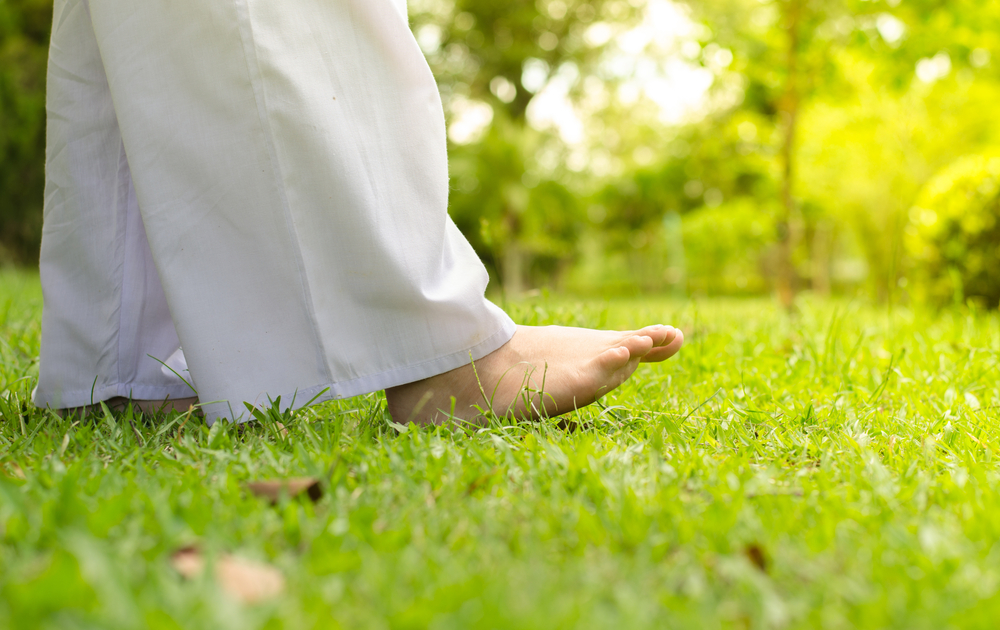
How to practice walking meditation - Picking a place
Look for a place where you can walk slowly without obstacles. The location needs to be peaceful and devoid of traffic, and ideally it should be flat enough that you don’t have to worry about stumbling. If you’re walking in a public space, you’ll need to take care not to get in the way of others. Practicing indoors may be a good option since you can focus directly on mindfulness with fewer opportunities to be distracted by your surroundings.
Getting started
After you’ve found a suitable place, begin each session by anchoring yourself. Take a minute to breathe deeply as you bring your full attention to your body. Sense how stable the ground feels beneath your feet. Be aware of the many different sensations within your body. Take note of your thoughts and feelings as well. Now start walking slowly. In walking meditation, rather than focus on the breath, direct your attention to the movement of your feet and legs, and the motion of your body as it advances. Just walk slowly and mindfully in a circle or back and forth. If you’re turning around or turning a corner, be as mindful as you can of the position of your feet and the accompanying sensations. It is good to walk for at least 10 minutes. You can always take a break and stretch or simply stop moving and check in with yourself.
Maintaining mindfulness as you walk
As you observe the varying physical sensations that manifest as you walk, take note of your feelings, thoughts and moods as well. No need to make a list, analyze, accept or reject – just notice these mental events as they arise and go back to the practice of walking. Try not to be rigid or mechanical while you walk. Simply walk naturally with goodwill and an open heart: go with the flow.
Speed and posture
The pace of walking meditation ranges from slow to extremely slow. You can let your hands and arms swing loosely by your sides, hold them behind your back or clasp them in front of your body around the height of your diaphragm or navel. Your leg muscles should be relaxed as you walk, your movement natural and comfortable. Walk with poise, keeping your body upright, aligned and dignified. It may be a bit challenging at first, but with practice you’ll definitely get the hang of it.
Benefits of walking meditation
1. Meditation while walking is a good practice for beginners and advanced practitioners alike.
2. Mindful walking meditation gets the blood circulating if we’ve been sitting in meditation for a while or if we’re feeling a bit dull.
3. Practiced in tandem with sitting meditation, movement meditation provides additional insights.
4. It can easily be integrated into our schedules since walking is something most of us do every day.
5. Walking meditation gives us an opportunity to remember the earth that sustains us and develop gratitude.
6. Walking meditation is just that simple.
Meditation for Healing
In recent years thousands of people have participated in studies that confirm the beneficial effects of meditation for stress, depression, managing chronic pain, insomnia and other conditions. Clearly, there are forms of meditation practice that can help people cope with what ails them. But did you know that in some cases meditation can even help people cure what ails them?
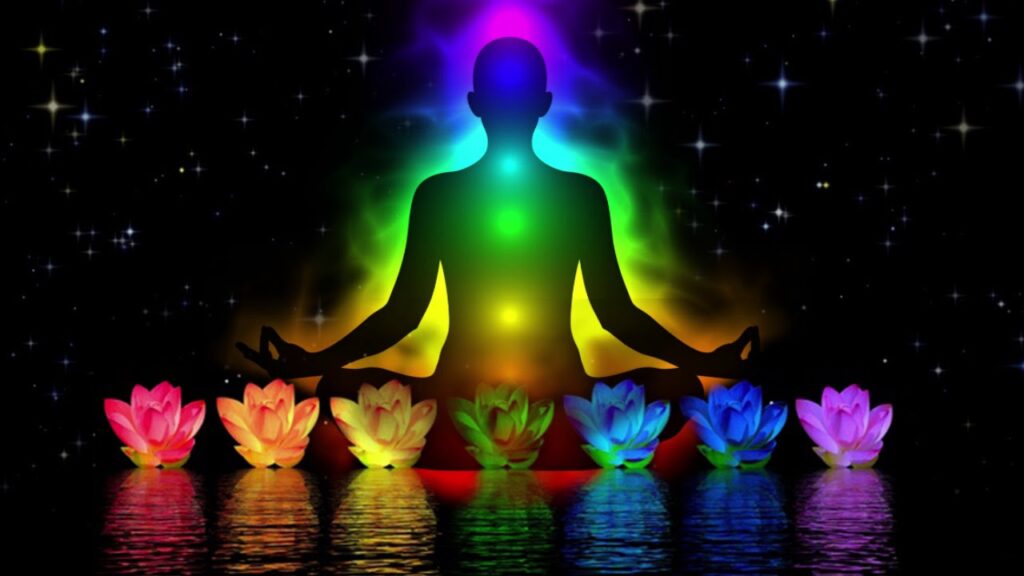
A remarkable story of healing
An article published in the Daily Beast called Can Meditation Cure Disease tells of a 37-year-old Tibetan lama who arrived in New York with a gangrenous leg and was told by three different doctors that the leg needed to be amputated as soon as possible. Even though his physicians were certain that if the lama kept his leg the gangrene would kill him, before giving his consent, he spoke with the Dalaï Lama, who told him not to amputate but instead to do certain healing meditation practices. The story details how, after several months of intensive healing meditation practice, the illness reached a turning point – which was considered medically impossible – and within a year the leg had healed and the lama was walking again.
Over the ages there have been countless accounts of faith-based and prayer-based healing. What stands out here is that the illness and recovery were well-documented and that a team of respected doctors and researchers has been studying the case to try to determine how such a thing could be possible.
One of the researchers, Dr. William C. Bushell, spoke of Tibetan – and yogic – practices involving prana, the subtle circulatory and energetic system of the body sometimes referred to as “the winds.” Bushell is quoted in the article as saying, “It is not entirely clear from a Western science perspective what the winds are, but the scientific evidence suggests to me and others that the meditative process involving winds includes increased local blood flow, metabolic activity, and oxygenation.”
Meditation can transform the mind; mind can transform the body.
The area of using meditation for self-healing has been of great interest to brain researchers around the globe. Numerous studies have revealed the relationship between meditation and a healthy brain. It would seem that the brains of long-term meditators are wired a bit differently than those of non-meditators.
Two regions of the brain are responsible for depression, anger, stress and anxiety: the right prefrontal cortex and the amygdala. These regions become overly active when your mind is agitated or you’re upset. The left prefrontal cortex, on the other hand, is associated with feelings of peace, happiness, self-awareness and positivity. This region is activated in the brains of consistent meditators. So is the production of the “happy” neurotransmitter serotonin – in fact, some anti-depressants artificially increase serotonin, and that’s what makes people feel less blue. Clinical studies have also linked production of dopamine with meditation. Dopamine is the neurotransmitter that helps create feelings of pleasure and reward (just like chocolate, but without the calories.)
Meditation is believed to influence the sympathetic nervous system, keeping blood pressure, respiration and heart rate in check. When poorly controlled, these are the physical parameters that go hand in hand with feelings of stress and anxiety.
There’s no question that stress and anxiety are linked to a wide variety of maladies, including heart attacks, high blood pressure, digestive issues, sexual dysfunction and insomnia. And science concurs that many forms of meditation help reduce stress, starting with mindfulness, as practiced in Mindfulness-Based Stress Reduction for example, and Transcendental Meditation, as well as relaxation meditation, guided meditations, walking meditation and more.
Taking care of your whole self
Trinlay Rinpoche, a scholar and meditation expert who teaches all over the world, says that meditation is the best way to take care of yourself: your mind, body and essence. Meditation not only makes our lives more meaningful, it also offers us a natural healing mechanism. Many ailments begin with an imbalanced or stressed mind and develop in susceptible parts of the body. By working with the mind and learning to better manage the triggers that disturb it, we bolster the body’s natural defenses.
Guided meditation for healing is a great way to release the stress that accumulates in the mind and the tensions that build up in the body. One of the reasons that guided meditation is particularly effective is that you can just relax and enjoy it. The only thing you have to do is try to stay focused.
Falling Asleep During Guided Meditation
Falling Asleep During Guided Meditation

Is it okay to fall asleep while meditating?
An ever-increasing number of people from all horizons are discovering that meditation gives them a deep sense of self-awareness and calm. Meditation is a natural practice that offers a wide array of health benefits as well as insights that lead to a more fulfilling and compassionate life. It’s also an effective antidote to the pressures of our modern, super-fast-paced world – pressures that can wear us down and leave us feeling stressed and exhausted.
No wonder that taking a break from the daily grind in order to sit in simple but profound awareness of the present moment may give body and soul the impression that it’s time for some Zs. At one point or another, most meditators find their sitting practice so relaxing that they doze right off. But is it okay to fall asleep while meditating?
Falling asleep during meditation
The type of meditation you practice and your physiological makeup and natural tendencies may determine the likelihood of your falling asleep during your session. If you’re over-stressed or you’ve been dealing with sleep-deprivation, it shouldn’t come as a surprise if you fall asleep while meditating. In fact, if you’ve been dealing with insomnia, falling asleep may be welcome – if you had enjoyed a restful night, your meditation experience might be more energetic and wakeful. In any case, if you fall asleep, don’t be alarmed – your body’s response to meditation is usually a reflection of the thoughts, emotions and sensations that linger deep within. Falling asleep is not a sign of failure, it’s a sign that you are a relaxed (and possibly exhausted) meditator. Feel free to experiment with different remedies until you find a way to remain relaxed and maintain alertness. Have patience, apply the right remedies, and with time you’ll find the right balance.
How to avoid falling asleep in meditation
Here are a few tips that can help you remain aware and grounded while you meditate:
Keep your eyes open
When you’re tired, closing your eyes when you meditate tells your brain and body that it’s time for sleep. Also, meditators who shut their eyes may find it more difficult to keep their imaginations in check and stay centered. Next time you meditate, try keeping your eyes open or half-open while gently gazing downward. You may benefit from finding a point on the wall or floor or placing an object in front of you that can anchor the gaze. Those little flickering plastic tea lights are a good option – the movement of the “flame” can help keep you focused and a stable gaze helps keep you rooted in the present.
Try different types of meditation
Obviously, lying down when you meditate is more likely to encourage sleepiness than sitting…. or walking! Walking meditation is a perfect partner to sitting because as we walk, our minds become attuned to the environment. The object of meditation shifts from your breathing as you remain still to the movement of your feet and legs and the sound of your feet on gravel or of dry leaves crackling underfoot. Walking also stimulates blood flow.
Take a break
You’ve given yourself a reasonable goal for your meditation session and you’ve been sitting for a while. But you’re really wrestling with the sandman. Take a break! Stand up, stretch your body, breathe! Open a window, help yourself to a glass of water or some tea. If you possibly can, maintain awareness during your break. Try to remain focused: when you stretch, be aware that you’re stretching. When you make a cup of tea, be aware that you’re making tea. Don’t check your emails or phone – they’ll still be there when your session is up. You’re still practicing, just a little bit differently. Your concentration will improve when you resume sitting.
Meditate with others
If you have the opportunity to meditate with another person or other people, this can help stave off drowsiness – if only for the embarrassment issue. Anyone who has practiced with others knows what it’s like to be the one who starts tilting over or snoring during meditation – it’s almost a rite of passage! But seriously, having another person or other people in the room, whether you’re home or at a meditation center, is a major motivator.
Here are a few more tips that can help:
1. Keep the lights on.
2. Air is good! Open windows are helpful.
3. Cooler temperatures are more wakeful than cocoon-like warmth.
4. Adjust your meditation moment – most
5. people find that mornings are best.
6. Pay attention to your posture and keep your back (comfortably) straight.
7. Raise your gaze.
8. Avoid meditating after a heavy meal.
Meditation and ADHD
Attention Deficit Hyperactivity Disorder (or simply ADHD) is a disorder characterized by hyperactivity, extreme distractibility and impulsivity. This condition commonly presents itself during childhood, but it may not be diagnosed in a timely manner. If left unchecked, it usually progresses into adulthood.
It is often difficult for people who suffer from ADHD to organize activities, manage their time, remain attentive, keep up in school or maintain their jobs. ADHD is addressed further in the docufilm Resilience, which SWIM conducts screenings throughout our service areas. Symptoms of ADHD related to inattention include:
- Easily distracted
- Frequent daydreams
- Tendency to lose things
- Repeated careless mistakes
- Dislike of tasks that require sustained attention
- Trouble organizing and remembering to do daily chores
- Appears not to be listening to people
Symptoms of ADHD related to hyperactivity-impulsivity include:
- Difficulty staying quiet or still
- Restlessness
- Tendency not to wait for their turn
- Interrupts others, over-eager to express themselves
- Insufficient distance from emotions

Mindfulness for ADHD
One study conducted by the Journal of Attention Disorders that looked at the relationship between ADHD and meditation suggested that mindfulness has a positive impact on adults and adolescents suffering from attention deficits. Their conclusion has been backed up by several meditation experts.
Meditation plays out in three basic steps. First, individuals focus their attention on an object or process (following the breath, for instance). This acts as an attention anchor. The second step involves noticing and acknowledging the presence of distractors – thoughts, sensations, emotions and the like – and learning to let go of them. The third step entails gently but firmly coming back to the anchor as often as necessary.
People with ADHD who repeat this simple mindfulness meditation exercise often find that it improves their focus. By remaining in the present moment and training in letting go of distractors, they realize that they have agency over how they react to these distractors. It has also been shown that mindfulness for ADHD significantly improves the span of concentration and focus. Participants who completed the aforementioned study reported extremely high satisfaction levels, giving the program an average score of 9/10.
Fully 78% of those who participated in the study showed an average of 30% reduction in ADHD symptoms. Among adults, anxiety and depression symptoms also decreased. This result represents a critical, significant breakthrough in the management and treatment of ADHD – a decline of 30% in ADHD symptoms is more beneficial than the benefits offered by ADHD medication thus far. Individuals living with ADHD often seek alternative, non-pharmacological methods of treating their condition. With such promising results linking ADHD and meditation, an answer is within reach.
Training your mind to be calm
Anyone can practice mindfulness and benefit from it. You only need to sit down, get comfortable and take at least five minutes to focus on your breathing technique. Notice the varying sensations seething through your body as you breathe deeply. Pay attention to the rising and falling of your diaphragm. You may soon find yourself thinking of other stuff – your meeting with a client or dinner plans with your sister. Don’t beat yourself up for this, it’s completely natural. Simply notice these thoughts and then refocus on your breath.
Mindfulness is a practice that can be performed at any given time. Whether you’re cooking, conversing with your friends or brushing your teeth, simply tune your mind to a state of deep self-awareness. Notice every detail about the tasks you carry out. Doing this for several minutes every day trains your mind to focus on the here and now. Tokpa Korlo, a meditation teacher also diagnosed with ADHD, teaches in his Mind Talk on Mindworks App that our fear of now often kills our motivation and passion to do what we really want. It makes life difficult. But when we practice mindfulness, we cherish the present time and seize the current moment. It’s therefore unsurprising that mindfulness for ADHD works wonders.
If you’re looking for help coping with ADHD, you could always try guided meditation. While there are many apps or platforms that could help you, Mindworks Meditation Courses come highly recommended. They contain an assortment of daily guided meditations and Mind Talks which will prove extremely beneficial, including compelling real-life instructions and meditation guidelines from Tokpa Korlo. Remember, “Meditation applies brakes to your mind.”


